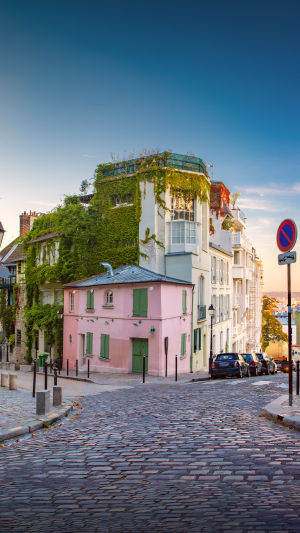Paris is the capital of the French Republic in Western Europe.
It borders Belgium, Luxembourg, Germany, and Switzerland to the north, Italy and Monaco to the east, Spain and Andorra to the south, and Britain across the English Channel to the northwest. Marine, continental, Mediterranean, and mountain climates coexist.
The terrain is high in the southeast and low in the northwest. The total area is 550,000 square kilometres (excluding overseas territories), with 2,700 kilometres of coastline and 2,800 kilometres of landline. The mainland is divided into 13 regions and 94 provinces. As of January 2022, the population is 65.63 million and the official language is French.
France is one of the most advanced industrial countries, leading the world in nuclear power, aviation, aerospace, and railways. It is a permanent member of the United Nations Security Council, a founding member of the European Union, and a member of NATO. It is home to the headquarters of UNESCO, Interpol, OECD, European Parliament, and other international and regional organizations. In 2021, France's GDP was $2.94 trillion and its GDP per capita was $43,518.
Paris is the capital and largest city of the French Republic, as well as the political, economic, cultural, and commercial centre of France. It is one of the world's five international metropolitans (the other four are New York, London, Tokyo, and Hong Kong), and has been rated as an Alpha+ first-tier city in the world by GaWC.
Paris is located in the centre of the Paris Basin in northern France, straddling both sides of the Seine River. The coordinates of the city centre are 48°52' north latitude and 2°25' east longitude. Paris can be divided into two parts: Little Paris and Big Paris. Little Paris refers to the city of Paris within the Grand Ring road, with an area of 105.4 square kilometres and a population of 2.24 million. Greater Paris consists of seven surrounding provinces: Hauts-de-Seine, Val-de-Marne, Seine-Saint-Denis, Val-d'Oise, Seine-et-Marne, and Essonne, which together make up the Paris region. This region was known as Île-de-France in ancient times. The metropolitan area is home to about 11 million people or one-sixth of the country's population.
With a history of more than 1,400 years, Paris is the political, economic, and cultural centre of not only France but also Western Europe. Paris, the city of Romance, is considered to be the starting point of the modern Olympic movement.
Speaking of Paris, we have to talk about the Louvre. Built in 1204, the Louvre was originally the royal palace of France. Home to 50 French Kings and queens, it is one of the most treasured buildings in France. The Louvre is famous for its rich collection of classical paintings and sculptures. It is the first of the four major museums in the world. The Louvre is a landmark building in Paris with a collection of more than 400,000 works of art.
Montmartre is a place full of legends. Montmartre was once a rural village of vineyards, mills, and windmills. It was incorporated into the city of Paris in 1860 and has been a district of Paris ever since.
Montmartre is so high, relative to the rest of Paris, that the Seine cannot rise against it. Montmartre Highland belongs to the city of Paris for only a short time of more than one hundred years and can be said to be the youngest district in Paris.





